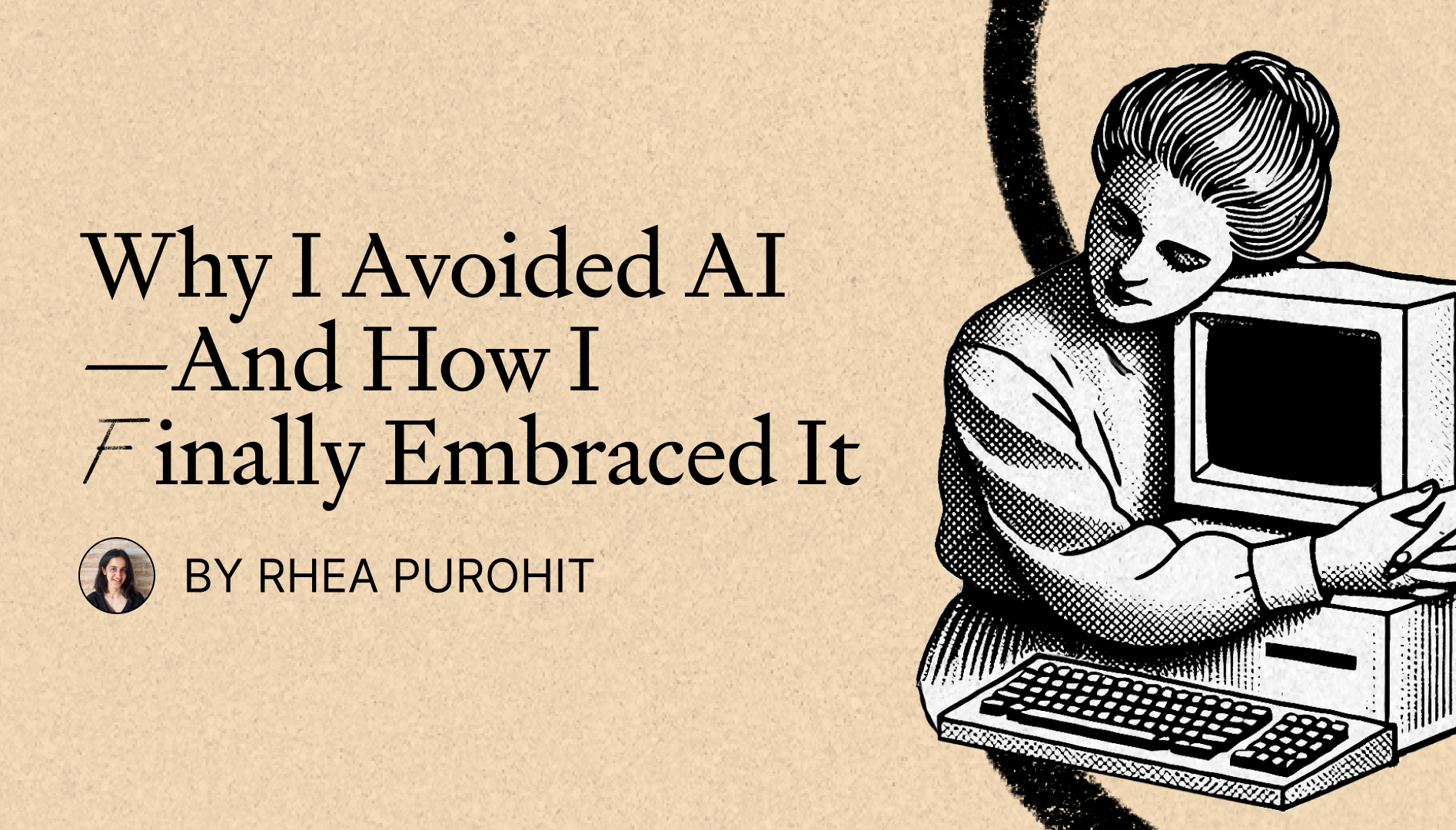Why I Avoided AI—And How I Finally Embraced It

🌈 Abstract
The article explores the psychological barriers that the author, Rhea Purohit, faces in embracing AI tools in her daily work as a writer. It discusses her reluctance to use AI despite being knowledgeable about it, and the steps she is taking to overcome this hesitation.
🙋 Q&A
[01] Overcoming Psychological Barriers to AI Adoption
1. What are the key reasons behind Rhea's reluctance to use AI tools?
- Rhea struggles to use AI because she doesn't like the uncertainty that comes with using a new technology. She is comfortable with her existing workflows and is hesitant to change them.
- Rhea is aware that AI can help her work more efficiently, but she wrote for a living before AI became accessible, so she is used to her familiar and reliable workflows.
- Rhea finds that integrating AI into her workflow feels like work, as she has to figure out what to delegate, choose the right tools, and iterate on the input she provides.
- Rhea is also hesitant because AI is an objectively new technology, and there is no one true way to use it yet, which adds to the uncertainty.
2. What strategies is Rhea using to overcome her hesitation and embrace AI?
- Rhea is taking a gradual approach, allowing herself to experiment with AI little by little, rather than trying to overhaul her entire workflow at once.
- Rhea is nurturing her curiosity about technology by carving out time to explore new online tools, including AI-powered ones, which helps maintain her fascination with technological advancements.
- Rhea is also being influenced by the excitement and experimentation around AI within her team at Every, which is priming her to run her own AI experiments.
[02] Lessons for Adopting New Technologies
1. How does the author compare learning a new language to integrating AI into familiar workflows? The author compares learning a new language as an adult to weaving AI into familiar workflows. In both cases, you are learning new ways to do familiar things, and it's important to take a gradual, "little by little" approach, rather than expecting to become fluent or fully integrated immediately.
2. What role does curiosity play in overcoming resistance to new technologies? The author believes that curiosity is not a fixed trait, but rather something that can be nurtured and developed. By carving out time to explore new online tools and technologies, even if they are unrelated to her work, the author is able to maintain her fascination with technological advancements and be more open to experimenting with AI.
3. How can the influence of the people around us impact our adoption of new technologies? The author notes that she is lucky to work in an environment where everyone is excited about finding ways to use AI effectively. This exposure to her colleagues' experimentation with AI primes her to run her own experiments and be more open to integrating these tools into her own workflow.